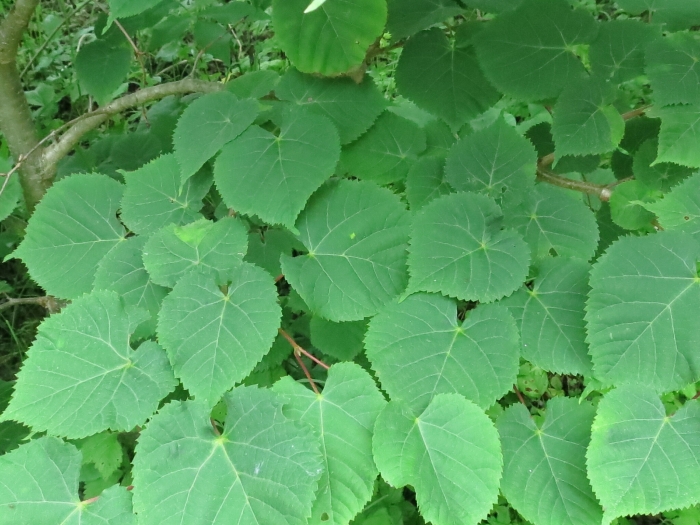Amur Lime
(Tilia amurensis)
Amur Lime (Tilia amurensis)
/
/

Repina Tatyana
CC BY 4.0
Image By:
Repina Tatyana
Recorded By:
Copyright:
CC BY 4.0
Copyright Notice:
Photo by: Repina Tatyana | License Type: CC BY 4.0 | License URL: http://creativecommons.org/licenses/by/4.0/ | Rights Holder: Repina Tatyana | Publisher: iNaturalist | Date Created: 2022-07-02T09:50:18-07:00 |

























Estimated Native Range
Summary
Tilia amurensis, commonly known as Amur lime or Amur linden, is a deciduous tree native to the temperate deciduous forests of the Russian Far East, northeastern China, and Korea. It can grow up to 98 feet (30 meters) tall and is characterized by a broad, rounded crown. The tree’s leaves are heart-shaped with a serrated margin, smaller than those of Tilia cordata, and emerge in late spring. The Amur linden produces fragrant, creamy-yellow flowers in cymes during early to mid-summer, which are highly attractive to bees. These flowers are followed by small, nut-like fruits attached to a leafy bract. The bark is gray and becomes furrowed with age.
Amur linden is valued for its hardy nature and adaptability to urban conditions, making it suitable for street planting in colder climates. It is also appreciated for its dense canopy, providing excellent shade. The tree prefers fertile, well-drained loams with medium moisture and can tolerate a range of soil types, including clay, sand, and acidic soils. It requires full sun to part shade and is relatively low maintenance once established. In addition to its use as a timber source in its native range, the leaves are harvested to make a tea with antispasmodic, diaphoretic, and sedative effects. Amur linden is not commonly associated with serious disease or pest problems, but it can be susceptible to linden borer and Japanese beetles.CC BY-SA 4.0
Amur linden is valued for its hardy nature and adaptability to urban conditions, making it suitable for street planting in colder climates. It is also appreciated for its dense canopy, providing excellent shade. The tree prefers fertile, well-drained loams with medium moisture and can tolerate a range of soil types, including clay, sand, and acidic soils. It requires full sun to part shade and is relatively low maintenance once established. In addition to its use as a timber source in its native range, the leaves are harvested to make a tea with antispasmodic, diaphoretic, and sedative effects. Amur linden is not commonly associated with serious disease or pest problems, but it can be susceptible to linden borer and Japanese beetles.CC BY-SA 4.0
Plant Description
- Plant Type: Tree
- Height: 60-90 feet
- Width: 40-70 feet
- Growth Rate: Moderate
- Flower Color: N/A
- Flowering Season: Summer
- Leaf Retention: Deciduous
Growth Requirements
- Sun: Full Sun
- Water: Medium
- Drainage: Medium
Common Uses
Bee Garden, Low Maintenance
Natural Habitat
Native to the temperate deciduous forests of the Russian Far East, northeastern China, and Korea
Other Names
Common Names: Amur Lime, Korean Linden, Amurlinde, Pinamu, Zi Duan
Scientific Names: , Tilia amurensis, Tilia amurensis f. koreana, Tilia amurensis f. koreana, Tilia amurensis f. polyantha, Tilia amurensis f. polyantha, Tilia amurensis var. araneosa, Tilia amurensis var. glabrata, Tilia amurensis var. grosseserrata, Tilia amurensis var. koreana
GBIF Accepted Name: